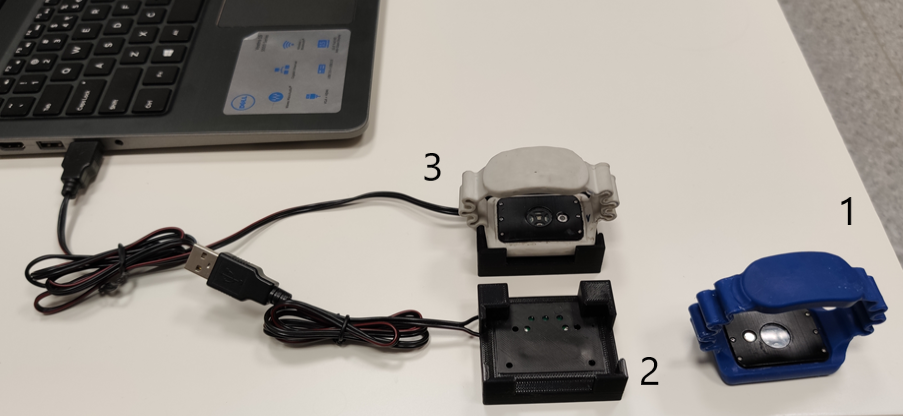Description
The data set was obtained during the project focus on the determination of changes in physiological parameters due to a stressful situation.
The measurements were conducted with the system which consists e.g. sensors of temperature, skin resistance, and pulse.
Long-term (60 minutes) measurement of physiological parameters was performed on the healthy volunteer (girl, age 16).
Acronyms used into a dataset:
t- time (counted every 5 seconds);
R – skin resistance (HI – too high value to be measured);
X – detection of stress (can be 0 or 1)
H – pulse
B- the value of the battery charge
T – skin temperature.
The figure of measurement system:
1 - sensors
2 - charger
3 - data transfer

Dataset file
girl_16y_60min_1s.txt
95.0 kB,
S3 ETag
43aed737921e4fdda75e3edafd114b1c-1,
downloads: 59
The file hash is calculated from the formula
Example script for calculation:
https://github.com/antespi/s3md5
hexmd5(md5(part1)+md5(part2)+...)-{parts_count} where a single part of the file is 512 MB in size.Example script for calculation:
https://github.com/antespi/s3md5
File details
- License:
-
open in new tab
CC BY-NCNon-commercial - Raw data:
- Data contained in dataset was not processed.
Details
- Year of publication:
- 2021
- Verification date:
- 2021-08-13
- Creation date:
- 2019
- Dataset language:
- English
- Fields of science:
-
- Automation, electronic and electrical engineering (Engineering and Technology)
- DOI:
- DOI ID 10.34808/jdz2-kr08 open in new tab
- Series:
- Verified by:
- Gdańsk University of Technology
Keywords
- pulse width modulation
- temperature
- skin resistance sensor
- biomedical engineering
- biomedical applications
- stress measurement
References
- publication System supporting behavioral therapy for children with autism
- publication Support for Employees with ASD in the Workplace Using a Bluetooth Skin Resistance Sensor–A Preliminary Study
- publication Selection of physiological parameters for optoelectronic system supporting behavioral therapy of autistic children
Cite as
Authors
seen 112 times

